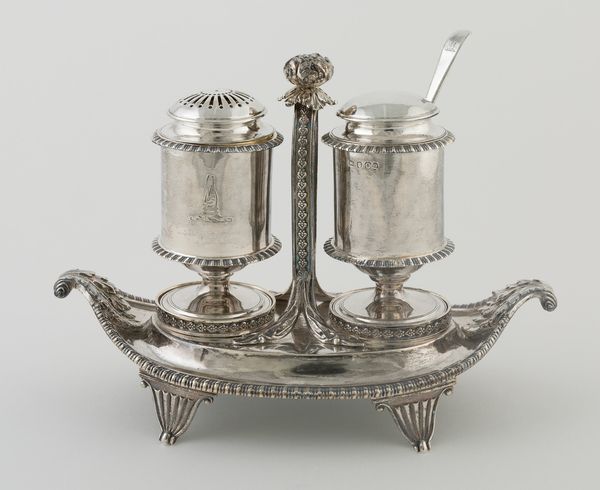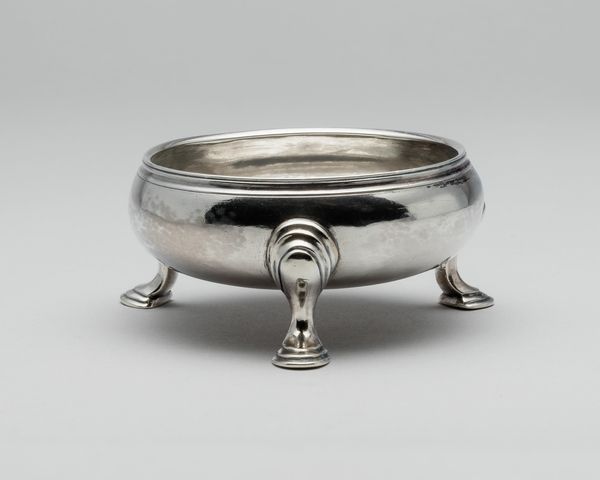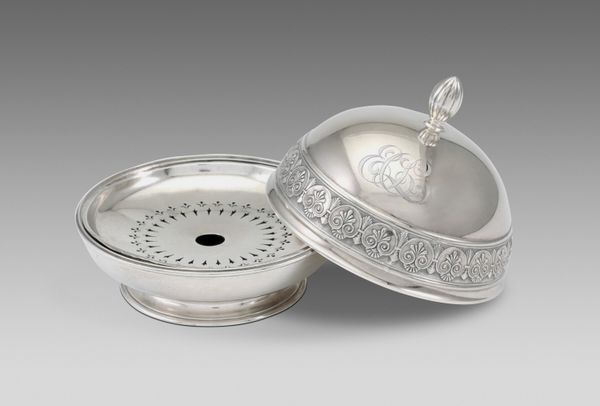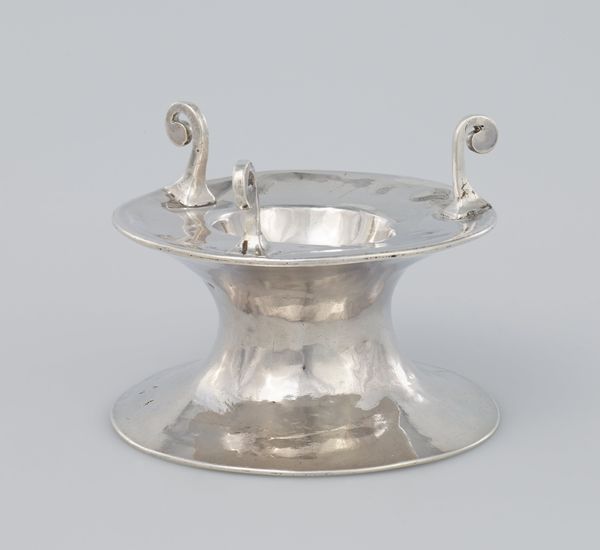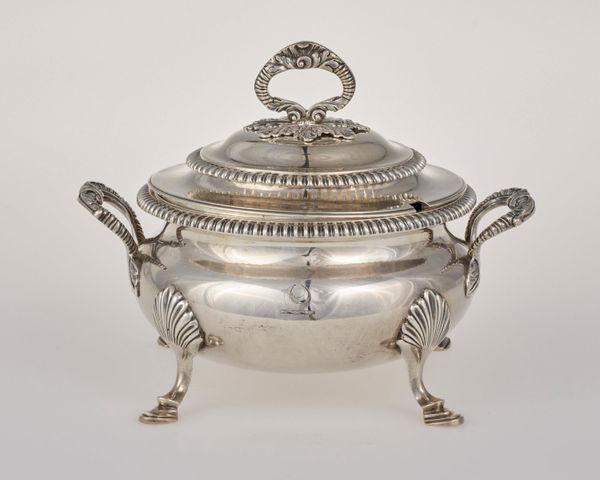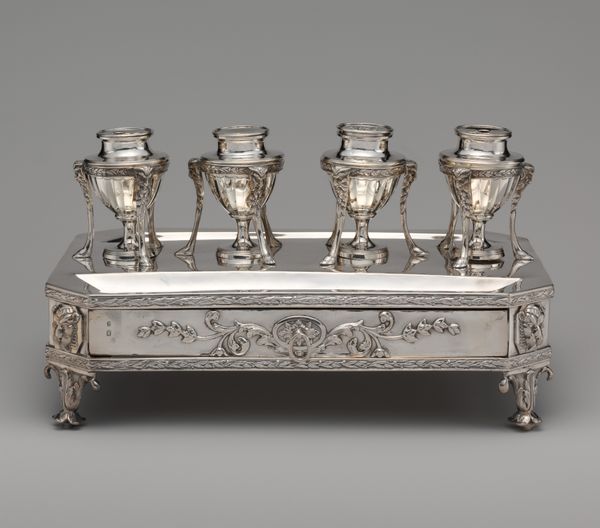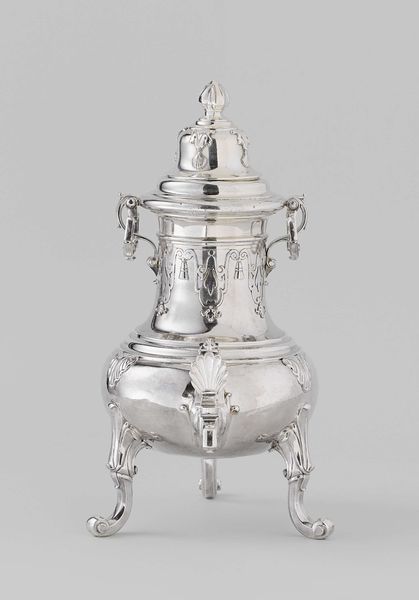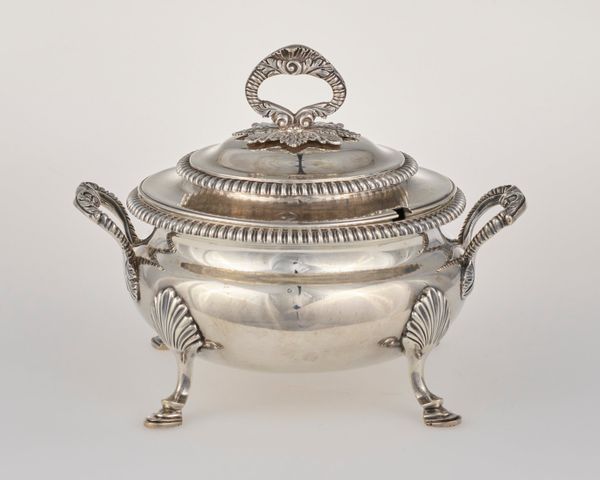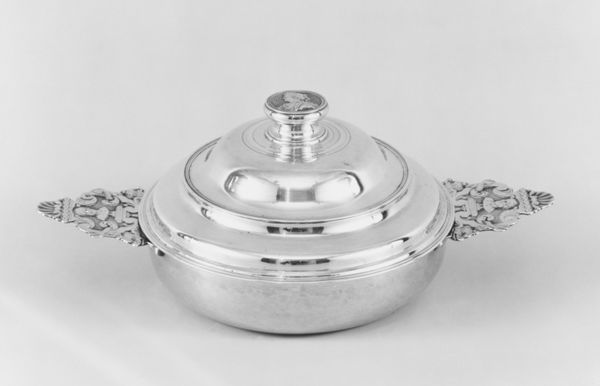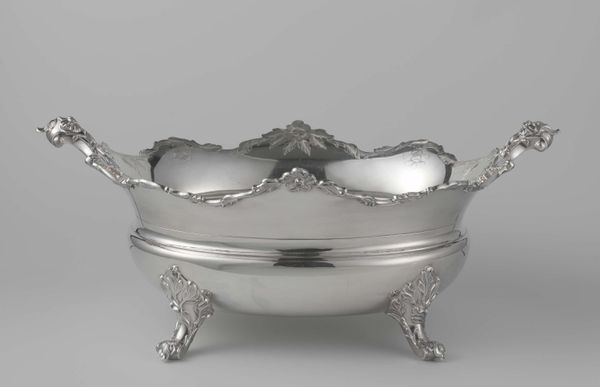
silver, metal, sculpture
#
silver
#
baroque
#
metal
#
sculpture
#
decorative-art
Dimensions: Overall: 4 1/8 x 6 1/2 in. (10.5 x 16.5 cm); 23 oz. 14 dwt. (736.7 g) Glass ink pot with silver cover: 1 3/4 x 2 1/4 in. (4.4 x 5.7 cm); 4 oz. 12 dwt. (143.3 g) Pounce pot: 1 1/8 x 2 5/8 in. (2.9 x 6.7 cm); 2 oz. 10 dwt. (78.2 g) Wafer pot cover: 9/16 x 2 5/16 in. (1.4 x 5.9 cm); 1 oz. 2 dwt. (34.5 g) Stand and attached parts: 15 oz. 9 dwt. (480.7 g)
Copyright: Public Domain
This silver inkstand was crafted by John Coney in the late 17th or early 18th century. Observe how the desk set rests upon four small figures of lions. In antiquity, lions served as potent symbols of strength, courage, and royalty, often gracing the entrances of palaces and temples. Consider the lion motif as it appears across millennia, from the guardian lions of Mycenae to the heraldic symbols of European nobility. The repetition of this symbol speaks to its enduring appeal, resonating with subconscious associations of power and protection. Why do these symbols persist, reappearing in diverse cultural contexts? Perhaps it is the emotional resonance, the primal sense of awe and respect that these motifs evoke, which ensures their transmission across generations. As the image of the lion evolves, it reflects our collective psyche. Its ever-changing representation reveals our persistent need for symbols that channel powerful forces, shaping our understanding of ourselves.
Comments
No comments
Be the first to comment and join the conversation on the ultimate creative platform.
